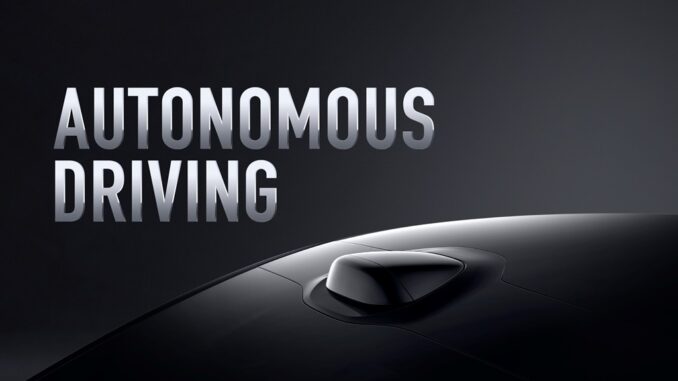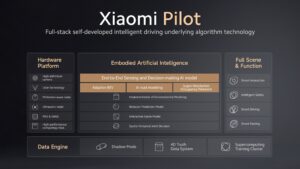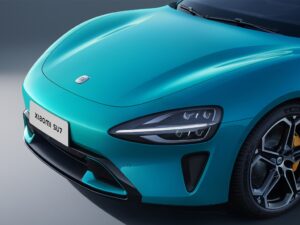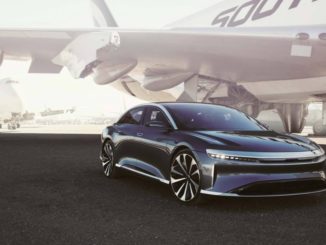
In the field of intelligent software technology, Xiaomi has showcased its intelligent ecosystem, an unique advantage as a global technology leader.
In terms of autonomous driving, Xiaomi has pioneered three key technologies: Adaptive BEV Technology, Road-Mapping Foundational Model, and Super-Res Occupancy Network Technology.
Adaptive BEV Technology is an industry-leading innovation that invokes different perception algorithms based on scenario. The perception grid has a minimum granularity of 5cm and a maximum of 20cm, with a recognition range extending from 5cm to 250m. This technology ensures wider visibility in urban scenarios, extended vision in high-speed scenarios, and more precision in parking scenarios.
 Road-Mapping Foundational Model revolutionizes traditional methods of perceiving road conditions. This model not only recognizes them in real time and intelligently switches to a more reasonable driving trajectory but can also navigate smoothly in complex intersections without relying on high-definition maps thanks to learning from complex intersection scenarios and experienced driver habits.
Road-Mapping Foundational Model revolutionizes traditional methods of perceiving road conditions. This model not only recognizes them in real time and intelligently switches to a more reasonable driving trajectory but can also navigate smoothly in complex intersections without relying on high-definition maps thanks to learning from complex intersection scenarios and experienced driver habits.
In terms of obstacle recognition, Xiaomi’s Super-Res Occupancy Network Technology achieves unlimited categories of recognition for irregular obstacles. Compared to traditional networks that interpret obstacles as blocks, Xiaomi’s innovative vector algorithm simulates all visible objects as continuous curved surfaces. This improves recognition accuracy to as low as 0.1m. Additionally, Xiaomi’s self-developed one-click noise reduction feature eliminates the impact of rain and snow on recognition, significantly reducing the probability of misidentification.
 In addition to the Road-Mapping Foundational Model, Xiaomi has also independently developed the world’s first production-ready “End-to-End Sensing and Decision-Making AI Model” for automated parking. This model allows for real-time observation and dynamic adjustment when parking in challenging scenarios, such as parking facilities that include elevators.
In addition to the Road-Mapping Foundational Model, Xiaomi has also independently developed the world’s first production-ready “End-to-End Sensing and Decision-Making AI Model” for automated parking. This model allows for real-time observation and dynamic adjustment when parking in challenging scenarios, such as parking facilities that include elevators.
On the hardware front, the system is equipped with top-of-the-line configurations, including two NVIDIA Orin high-performance chips with a combined computing power of 508TOPS. Perception hardware includes one LiDAR, eleven high-definition cameras, three millimeter-wave radars, and twelve ultrasonic radars on the Xiaomi SU7 Max model. With top-tier configurations and full-stack in-house research, Xiaomi’s intelligent Autonomous Driving system is set to join the industry’s top echelon by 2024.
Source: Xiaomi Corporation




































Be the first to comment